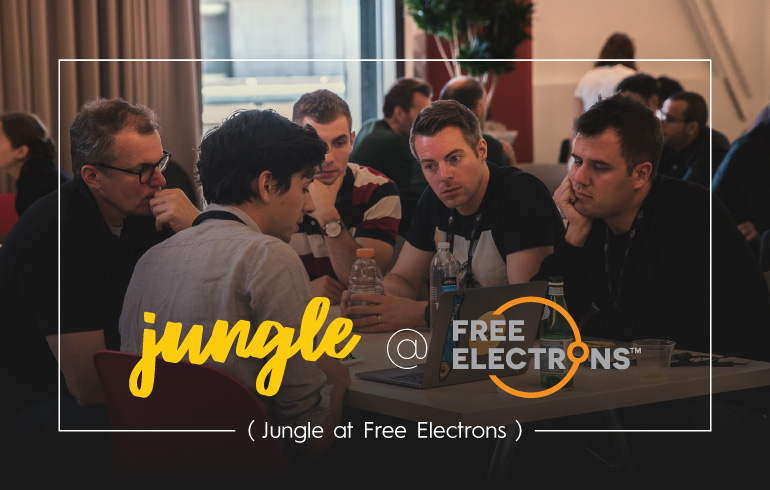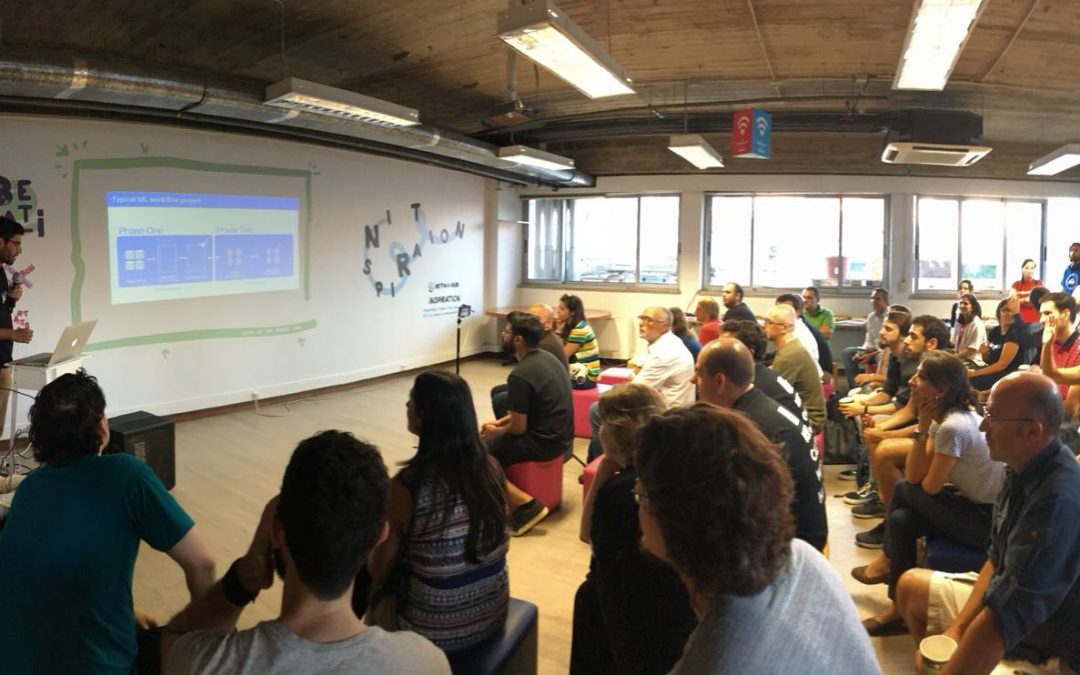
How Free Electrons changed Jungle’s mind about accelerators
Jungle is an innovative startup that is on a mission to reduce uncertainty. Wind turbines, power transformers, and heavy industry machinery – they use tailored AI models to identify when assets are underperforming and predict when they will fail.
They started out in Delft (Netherlands) in mid-2016, where Alexander Helmer and his co-founder, Tim Kock, were trying different AI technologies – they didn’t wanna focus on a single-purpose product – looking for something that could serve a broad spectrum of applications. Through their network, they landed on a case where they ended up developing their predictive system – that blew their minds and found a place in the world for the Jungle.
Looking to scale their business outside of the Netherlands, they looked into Portugal as a talent-filled pool and a great place to unleash the Jungle. They met Beta-i when they casually walked into a TGIF one day – and liked it so much that they decided to stay.
They’ve been in our hub since April 2017, so we went to talk to Alex Helmer, co-founder of Jungle, them about their experience in Free Electrons.
ReThink: I heard you were not big fans of accelerators or open innovation programs before FE. Why was that?
Alex: (laughs) You’re talking to the right person. The other team members were a lot more open-minded, I was the one that was a bit against accelerators. I think many accelerator programs focus on the first stages of starting a business: defining a product, defining a customer, validating your idea, business model canvasing, these types of things. That was my association with accelerators, that it focusses on early stage – on validation of your concept. So I was not too excited.
RT: So, what made you join Free Electrons?
A: It was actually Rodrigo Zwetsch [Beta-i’s community manager] that came into our office and said that maybe we needed to look into this. I was not fully convinced, I thought that we should keep with our existing customer database and spend time on building it out more. Tim and Silvio were actually more open-minded so we decided to dig a little deeper into what the program consists of. Turns out that, at that moment, it was a very different accelerator than what we thought, and there was actually a really good balance between the time you put into it, and the alignment that it had with the company that we were at that moment. Because we were still validating some of our ideas back then, we wanted to try it on different customers, we wanted to see how our solutions scale from one customer to the next. And this was actually a great opportunity to start testing that because there were a few very big and important utility companies globally present at the event. And we could see how long it takes to turn a solution if we go from A to B and also test it on C, how long does that take.
Turns out that, at that moment, it was a very different accelerator than what we thought, and there was actually a really good balance between the time you put into it, and the alignment that it had with the company that we were at that moment.
RT: So was that your main goal going into the programme, to test?
A: To test our solutions technically for sure, but also to test commercial viability. There are some areas that we work in where the way the stakeholders work together is fairly complex and closed, so we needed to understand better how we fitted in into that. And I would also say, to just create a network worldwide because if you serve, for example, utility companies, or factories of heavy industries as a customer, you can only grow so far within Portugal and the Netherlands, so you need to start looking beyond borders.
RT: You partnered up with EDP and also innogy. What were the pilots you worked on about?
A: At Jungle we currently have 3 products/verticals that we’re working on: one is on wind energy and wind turbines, one is more generic electrical assets like power transformers and circuit breakers, things typically in the electrical grid, and the third one is heavy industry, which is factories of basic materials like steel. The technology and the predictive capabilities that we build, they work pretty much the same for all three of these, so that’s why we have this big approach.
With innogy we worked in wind. The pilot was basically to show them what our predictive technology could do in an offshore farm and what it could do in an onshore farm, and given that result, how can we integrate it to make commercially viable for them.
With EDP, it has been a longer trajectory with them. They have a very big portfolio and different business units and all of them have transformers. And these things may fail – not that often! – but if they do they can fail pretty catastrophically and they’re expensive. We’re taking a look at a big spectrum of data and when you’re able to grab all this data and put it together in a logical way, you can start predicting when these failures might happen and also, with that, how you should operate them to extend their lifetime. So, it’s maintenance and also operations, in the sense that how do you operate them to have less maintenance.
[wonderplugin_carousel id=”2″]
RT: What was it like to work directly with corporate partners?
A: We had worked with utilities before in the Netherlands, on smaller projects. I think it’s a very interesting trajectory to go through. At Jungle, we’re all quite young – the oldest person is not even 35. So what we see of the world is how we operate. And this is the way we expect companies to work. Of course, we know that a utility company works differently than we do, especially big organizations. But, it is still interesting to observe the dynamics of how a company like that works and how you interact with them and what are the steps that you need to take in order to get a partnership with them.
RT: There must be a big gap between the way they work and the way you do. Did Free Electrons help you bridge that gap?
A: Yeah, there is a big gap. I mean, if you look at the footprint of the company, it’s completely different, it has to be different.
I think the interesting thing is that most of the people in the Free Electrons programme that are from the utilities’ side are from innovation departments, so they’re sort of in-between the two, and I think that’s a really good bridge because without that bridge it would very difficult for us to partner with the utility.
We’ve had really good relationships with the innovation people of the [Free Electrons’] companies we’ve worked with. EDP, obviously, because they are also an investor of ours, we’re next door, we’ve got a good relationship. But also with innogy – I mean, Tim went to Hamburg in October for an update, and he stayed at the Innovation Manager’s house – crashing in his guest bedroom – and he even picked him up at the airport at midnight. It was a very funny dynamic for sure, but without those people, it would be very very difficult.
RT: You developed a long term relationship with the utilities there, they are still your partners and your clients, right?
A: Yeah, of course! But I think this is also a bit of a given – as a startup, at least in the area we are, you have to develop a long term partnership with a company like that because the projects that we do are so big that it doesn’t make sense to do this in the short-term. In these projects, we only worked on a couple of wind farms for them, but they have dozens of wind farms, so we need to push for that.
I think it’s something that outside of a programme like that, it would have taken us just so much time.
RT: What surprised you the most in the program?
A: I think what maybe surprised me, and this is given my perspective of accelerators earlier on, it is how effective the time was that we spent during those four weeks. It was an intense programme for all four of the phases, but just putting all of these people in the same room, having a decent schedule, knowing what the goals are… I think it’s something that outside of a programme like that, it would have taken us just so much time. So, I guess, that’s the thing that surprised me, being against accelerators (laughs)!
RT: In the end, did it change your mind about accelerators?
A: (laughs) Yes, totally. I’ll confess to that!
In the end, we just asked Alex if he would recommend Free Electrons to other startups looking to go global. Here is his video reply:

